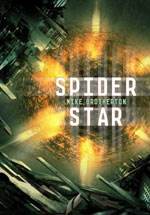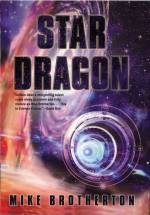Search
10 More Classic Mistakes in Science Fiction Movies
August 13th, 2012
I came across a kindred spirit today, finding an article titled 10 Classic Mistakes in Sci-Fi Movies.
His list takes some well deserved but easy potshots at some large targets, and perhaps more tv shows than movies.
1. Aliens Speak English, often without evidence of translators or any previous interaction with modern English-speaking humans. Let’s keep it easy on the audience who will go along with it, I guess.
2-4. Various complaints about weapons, some of which I agree with, and some of which might be solved by assuming unknown technology.
5. Noise in outer space, yeah, because in space no one can hear you scream, which is a memorable tagline that should have helped solve this issue. Thank you Star Wars.
6. Spaceship designs, which need not be aerodynamic given the relative vacuum of space. There are a lot of possible objections here, which could get very specific.
7. Ships always meet each other face to face, yeah, unlikely.
8. Aliens are always humanoids. Thank you small budgets and audiences who want to relate to human actors.
9. Too many LEDs. Maybe, but I like blinking lights, personally.
10. Retro-futuristic cultures. I blame low budgets again, and the desire to reuse all the left-over western sets, from when John Wayne was here.
So, I could quibble with a few items on the list here or there, or elaborate on his points, but I decided that there were a lot more classic mistakes to point out. If enough people do this often enough, maybe some of the writers and directors will pay attention and avoid them. Of course, I could be dreaming here…
OK, ten more:
1. Space is too small. Even with the use of cryosleep, travel is way too fast. Vipers flit through solar systems, landing on worlds and lifting off again, in a few hours at most. The Enterprise gets places in days at most, under most circumstances. Remember Hitchhiker’s Guide, “Space is big. Really big…”
2. Relativity is ignored. Sometimes there’s lip service to the need to go into hyperspace or warp, or to open a worm hole, but these craft under impulse power and in normal space never or rarely seem to experience relativistic issues. Causality issues involving faster than light travel are ignored.
3. A lot of alien planets have breathable atmospheres. This seems unlikely, especially when the landscapes look weird and unearthlike, without vegetation, and rarely ecosystems. Even if the atmosphere is technically breathable, are there poisons or dangerous microbes in the environment to be avoided at all costs? Avatar was a notable exception here, and to be praised in this respect. I blame budgets and the desire to have actors’ faces visible.
4. Exposure to space is badly portrayed. Sometimes people without space suits just explode, as in Outland. Sometimes they freeze immediately, as in Mission to Mars (as do liquids — from decompression/expansive cooling — into crystals not icecycles as in that ridiculous movie).
5. Not only are aliens humanoid, they’re often sexy and we can successfully mate with them. Star Trek is a big offender this way. Star Wars might be, but who can tell? Avatar skirts the line here…not sure how the Avatars mix human DNA with alien DNA. I read that the original plan was for the aliens to be more alien, but that was scrapped as too difficult to pull off for human viewers.
6. Alien food is edible…and either delicious or disgusting. I’d call this an unlikely and convenient assumption rather than an outright mistake.
7. Aliens are too human not just in appearance, but in their cultures and views. While I praised Avatar before, that movies aliens sure felt like Native Americans to me. The Klingons are Mongols, the Romulans are Romans, etc. In Star Wars, so many of the aliens in the prequels were bad, racist stereotypes. I know it’s hard to pull off, but how about some more aliens like Solaris?
8. Our heroes can always master alien technology, when necessary to the plot, in mere minutes. I don’t care how smart you are, try operating a Boeing 737, let alone a space shuttle, human-tech, with no training and I’ll count the days before you get them to do anything, or until you kill yourself. Remember learning to drive safely in mere minutes after the first time you sat down in a car? I don’t either. Independence Day is one stinker in regard to this problem, along with a Mac powerbook bringing down the alien enemy.
9. Clones are not clones, but copies with memories that grow to adulthood in days, and are usually spies. I hope I’ll never see another movie with a clone that turns out to be a copy, but I’m sure I will.
10. Energy sources (AKA batteries or generators) are small, safe, and run indefinitely, except when the plot demands otherwise. The Six-Million Dollar Man’s nuclear power source was rarely taxed, and never gave him cancer. Ray guns blast forever. The dilithium crystals and antimatter (which is the power source exactly?) let you go faster than light in Star Trek, or the beryllium sphere, except when they run out at strange intervals. I don’t know what the frak powers the ships in Star Wars. Robots go forever without eating, and are rarely seen plugging in. The energy needs for so much in science fiction are usually glossed over.
OK, that’s my list of extras. I’m sure there are more to go around (e.g. TV Tropes), aren’t there? Which ones bug you?
You can follow any responses to this entry through the RSS 2.0 feed. You can skip to the end and leave a response. Pinging is currently not allowed.


My biggest problem with science fiction on TV and in movies is that it’s almost always just too easy. Star Trek is a big offender here, with their holodecks and transporters, and what were the food machines called again? They often have to break half the ship so they can’t use their technology to fix the problem at hand without breaking a sweat. It also means that the threats must be stretch believability to the breaking point.
Space is not only big, it’s empty. Flying into a gas cloud is not going to hide you from your enemy. But your enemy is not really going to see you out in space in the first place unless they know where to look. We can barely detect 10km asteroids flying by the earth, so good luck finding a tiny spaceship at a million kilometers.
Of course in Star Trek they can detect life forms and even the kind of lifeform from lightyears away, while we have a hard time doing the same with probes on the ground on the next planet over within the solar system.
In my opinion, routinely having aliens is a bad idea, it’s extremely hard to pull off for the reasons you mention. A galaxy filed with humans after a “great explosion” type of thing would fit these storylines much better. So more Stargate, less Star Trek.
A huge annoyance for me is failing to consistently adhere to the defined limits of technology. I can understand that it’s not always easy to predict future technology and/or have to simply take a leap of faith that such technology is going to be available at some point in the far future (e.g., FTL travel)
But when you define some simple rules for technology at one point in the story, it shouldn’t be too difficult to maintain those rules going forward. One example that comes to mind is Star Trek’s holodeck. For some reason everything created in the holodeck could only exist in the holodeck. I never understood that constraint, given that we were to accept that “portable” technologies such as transporters and replicators had been in service since TOS.
Your first link is broken. I think it should be – http://www.dedoimedo.com/physics/sci-fi-mistakes.html
I am still going through the various articles.
Thanks, fixed!
I’ve seen this lots of places, but the one that sticks out the most comes from Babylon 5, which I love. I guess you can call it a matter of scale. There’s a scene where a Narn ship takes up about a 1/3 of the screen and a Centauri ship that also takes up about a 1/3 of the screen. So there’s 1/3 of the screen, or a ship’s length, between them. They’re shooting at each other … and missing! Either the gunners are just shooting in random directions and hoping to hit something, or in “reality” the ships are hundreds of kilometers apart, but they’re made big so we can see them. Space is big, but our TV screens are small.
Yeah, for the most part I take the stance of “the map is not the territory” when it comes to Sci-Fi: We’re not seeing Reality, but a stylized version with embellishments to compensate for the limited stimuli the film or TV show provides, i.e. a screen and some speakers.
I’ve tried watching space battles with the sound turned off, and it just doesn’t work. If the weapons beams weren’t visible, we wouldn’t even be able to tell that a ship was firing at a target off-screen.
When you look at an instruction diagram, with big red arrows apparently hovering over the moving parts, do you find yourself expecting to see those arrows appear in real life when you perform the action? Of course not.
I wouldn’t expect to hear a spaceship cruise past me, or see a laser beam, if I was floating in a spacesuit, no matter how many movies I’ve seen.